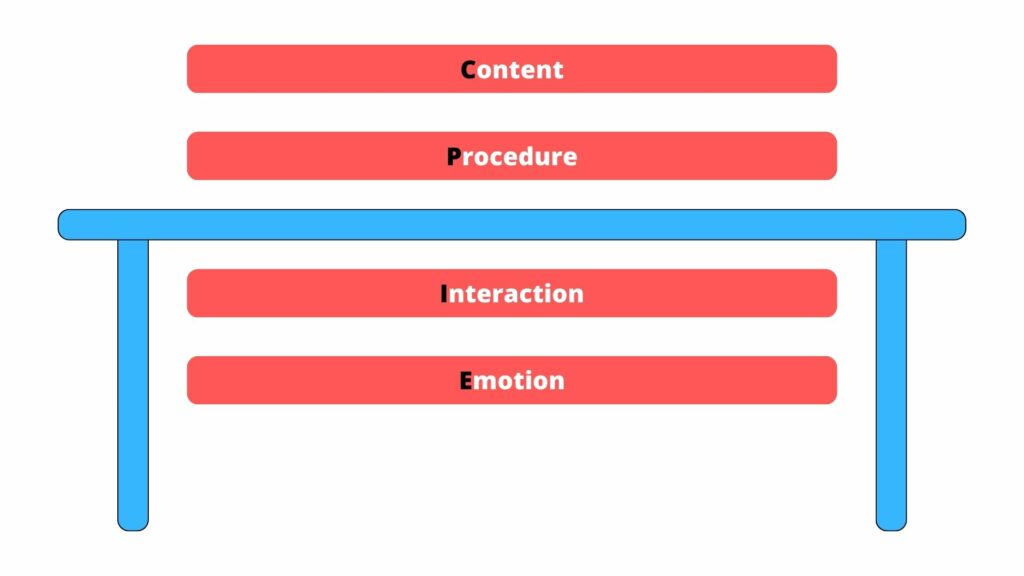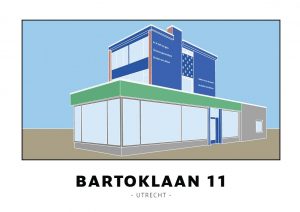The CPIE model depicts four levels of communication to help understand common communication errors. This understanding helps to better communication.

The four levels as seen in the model are:
- CONTENT
On the content level, topics like assignments, tasks, goals and results are discussed. The purpose of these conversations is usually answering the question: What do we have to do? - PROCEDURE
When procedures, agreements, structures, and resources are discussed, you’re communicating at the procedure level. At the procedural level, “how” to do the “what” is discussed and agreements are made on how to proceed. - INTERACTION
The Interaction level is about interacting with each other. This level is all about behaviour. Common questions at this level are: Who takes a more leading role? Who tends to follow? Do we interrupt each other’s sentences? Who is being listened to? Is there laughter, and why? - FEELINGS
Emotions lay at the base of all communication. The emotions people feel in a given situation affect the quality of the other three levels. This vital level, like interaction, is not always visible. Emotions are usually not expressed explicitly, which can cause confusion and lead to miscommunications.
In (professional) conversations, we mostly discuss the day-to-day content or related procedures of our work. Because of their prevalence, these two levels of communication are considered ‘above the table’. The other two levels, interaction and emotion, are generally less discussed. These levels are often more tense or a little uncomfortable to discuss They remain more hidden, or ‘under the table’. However, if a conversation isn’t going well, improvements are most likely to be made on these levels of communication.
Switching between levels
All four levels are closely intertwined and have a great influence on one another. In fact, in every conversation, we encounter them to a greater or lesser extent. This usually happens unconsciously. Being conscious about the different levels helps us to identify and address so-called blockage in a certain level. By consciously and explicitly shifting from one level to another, we are able to productively communicate through all levels.
 English
English Nederlands
Nederlands
